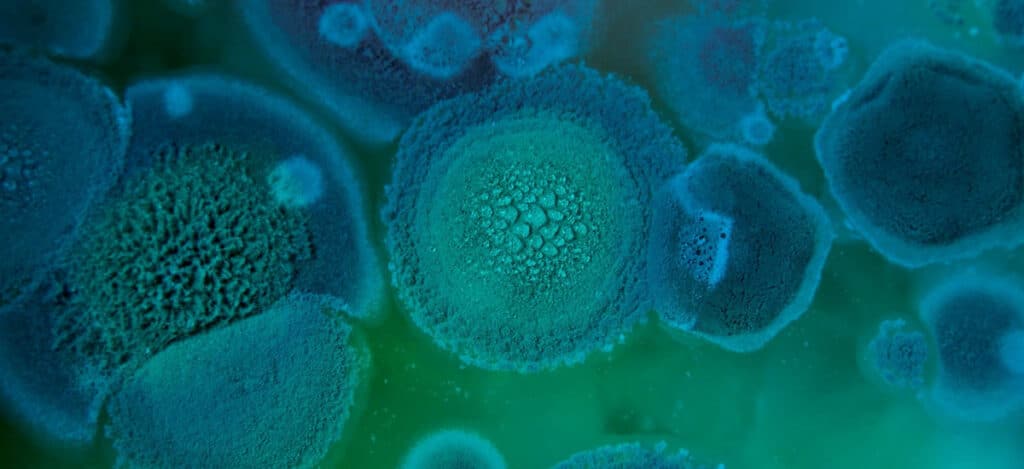Microbial Aerosol Challenge Testing vs. Microbial Immersion Challenge Testing
What is a microbial challenge test?
The “microbial” in microbial challenge testing refers to microorganisms. The “challenge” component of microbial challenge testing relates to exposure. In a physical challenge, you are exposing your body to physical challenges. In a microbial challenge, the sterile barrier system (packaging) of a product is exposed to (challenged by) microbes.
What are the differences between microbial aerosol challenge testing and microbial immersion challenge testing?
Microbial aerosol challenge and microbial immersion challenge testing use different methods to challenge medical packaging. First, for microbial aerosol testing, a prepared Bacillus atrophaeus suspension is loaded to the aerosol chamber’s nebulizers. Then the suspension is aerosolized over the samples and positive controls. The microbial immersion challenge test evaluates packages by immersing them in heavily contaminated challenge media under differential pressure conditions. The immersion challenged packages are then incubated to encourage microbial growth. Microbial aerosol challenge testing is a quantitative test that can determine the presence of the microbes and the degree of contamination of the aerosolized microbes. In comparison, microbial immersion challenge testing is a qualitative test for microbial growth. Microbial growth is visually detected for microbial immersion challenge testing.
Further, microbial immersion challenge testing is a package leak test for nonporous packaging. Thus, microbial immersion challenge testing uses the application of differential pressure under a vacuum. This differential pressure under vacuum allows sterile test media within the package to move to the packaging edges, creating a fluid path for any external challenge media at any leak sites. The differential pressure also serves to simulate pressure differentials if packages are shipped as air freight. On the other hand, microbial aerosol challenge testing is used to test vial enclosures to ensure that the vial enclosure doesn’t allow microbes to enter the vials following the entry and exit of syringe needles during dosage draws. Microbial aerosol challenge testing is not performed under vacuum or at differential pressure.
Why are both microbial aerosol challenge testing and microbial immersion challenge testing important?
Microbial aerosol challenge tests evaluate if external bacterial contaminants can enter a medical product’s sterile packaging system. Microbial aerosol challenge testing is vital for verifying multi-use vial enclosure systems (such as those used for vaccines and other parenteral products). All microbial aerosol challenge methods are performed in an ISO Class 5 laminar flow hood to maintain sterility during the assessment. Microbial aerosol challenge testing ensures that the sterile or aseptic vials act as an effective microbial barrier and preserves the sterility of the product even when the outside is exposed to high concentrations of bacteria. Vials with robust microbial barriers will not have bacterial growth within the vial after aerosol challenge testing.
Microbial challenge tests by immersion are used when a validated physicochemical leak test method does not exist or when there is a need for direct evidence of the prevention of microbial entry into a packaging system. Microbial immersion challenge testing is a qualitative measure that confirms leaks in nonporous, rigid, or flexible packages.
For this test to be effective, the containers must be able to tolerate submersion. Microbial immersion challenge testing is often used in product–package development and validation studies.

Summary
Overall, microbial aerosol challenge and microbial immersion challenge tests are important package integrity testing methods for regulatory approval of a medical device or product. These tests ensure that medical product packaging protects products from microbial contamination so that patients will not be at risk of sickness following product use. Microbial aerosol challenge testing is primarily used to test vials for airborne bacterial ingress during dosage draws. In contrast, microbial immersion challenge testing evaluates nonporous packaging material for microbial ingress following liquid bacterial challenge. No matter which microbial challenge test meets your regulatory testing needs, make sure you choose a contract testing organization that can support you with appropriate microbial challenge testing for your unique medical device or product needs.
MycoScience is a contract manufacturing organization specializing in Microbial Aerosol Challenge Testing. Additionally, MycoScience provides sterile syringe and vial filling for parenteral products. MycoScience also offers Bioburden Testing, Bacterial Endotoxin Testing, Preservative Efficacy Testing, Sterilization Validations, Cleaning Validations, Accelerated Aging, Microbiology Testing, Cytotoxicity Testing, EO Residual Testing, Package Integrity Testing & Environmental Monitoring services for medical device companies, and allied industries. MycoScience is an ISO 13485 certified facility.
References
ANSI/AAMI/ISO 11607-1, 2006/A1:2014, Packaging for terminally sterilized medical devices – Part 1: Requirements for materials, sterile barrier systems and packaging, Amendment 1
ASTM F1608 – 16, Standard Test Method for Microbial Ranking of Porous Packaging Materials (Exposure Chamber Method)
Technical Report No. 27, Pharmaceutical Packaging integrity, 1998, PDA
Technical Information Bulletin No. 4, Aspects of Container/closure Integrity, PDA
United States Pharmacopeial Convention. <1207.2> Package Integrity Leak Test Technologies. Rockville, MD, USA. 2021. (USPC <1207.2>)
Sharing this in your social netwroks

